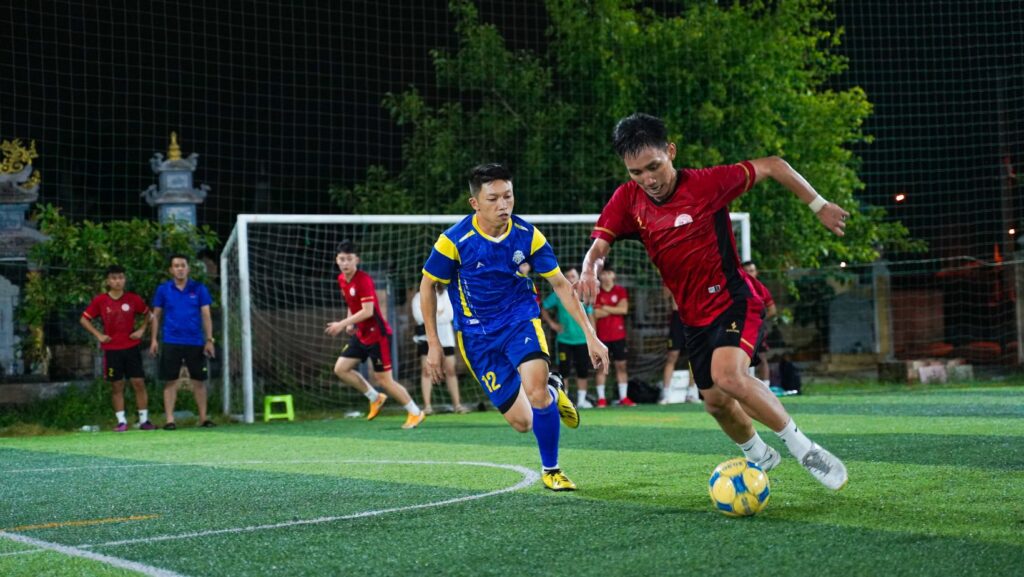
For decades, the sound of a soccer ball striking a boot, thudding against the goalpost, or echoing across the stadium has been an inseparable part of the beautiful game. From the rhythmic thump in neighborhood pick-up games to the resonant clangs in professional arenas, the auditory experience of soccer has defined the sport for generations. Yet, in recent years, a quiet revolution has begun—one that could fundamentally change how we play, train, and experience soccer. Enter the era of silent soccer balls.
Silent soccer balls, sometimes referred to as low-noise or whisper balls, are engineered to dramatically reduce the sound generated when they are kicked, passed, or bounced. At first glance, the idea might seem strange, even unnecessary. After all, the satisfying “pop” of a well-struck ball is a hallmark of the sport. But the development of a silent soccer ball addresses a growing set of modern challenges—urban noise restrictions, indoor training environments, and even player focus and safety.
The Engineering Behind the Silence
Creating a soccer ball that maintains proper bounce, weight, and flight while minimizing sound is no simple task. Traditional soccer balls are composed of stitched leather or synthetic panels surrounding an air bladder. The loud noise we associate with a ball striking a surface is largely due to the impact of these rigid panels and the compression and decompression of the air bladder.
Engineers behind silent soccer balls have innovated in several key areas. Some use advanced foams or gel-based bladders that absorb impact without sacrificing elasticity. Others incorporate softer outer panels or specialized seam designs to dampen vibrations. The result is a ball that feels and performs like a traditional soccer ball but produces only a muted thud rather than a sharp crack. 
Interestingly, some designs even allow players to adjust the ball’s “sound profile,” offering a hybrid experience that can switch between quiet and standard acoustics. This kind of innovation demonstrates how a silent soccer ball is not simply about reducing noise—it is about rethinking the sensory experience of the game.
A Game Changer for Training and Urban Play
The introduction of a silent soccer ball is particularly significant in urban and indoor settings. As cities become more densely populated, traditional outdoor soccer games can lead to noise complaints from neighbors. Indoor facilities, which host training sessions and recreational leagues, often face similar challenges. A silent soccer ball provides a practical solution, enabling players to train in apartments, gyms, and schools without disturbing others.
Beyond convenience, the reduced noise can improve focus and technique. Coaches have observed that players using quieter balls often develop a heightened sense of touch and control. With auditory feedback minimized, players rely more on visual cues and proprioception—the body’s awareness of position and movement. Some argue that this may cultivate a more refined technical skill set, especially in younger athletes.
Implications for Professional Soccer
While the initial adoption of silent soccer balls has been concentrated in recreational and training environments, the concept has begun to intrigue professional leagues. Imagine a scenario where a high-profile match could be played indoors or in urban stadiums without amplifying the usual crowd and ball noise. For broadcasters and advertisers, a quieter field might also allow for enhanced audio capture of commentary, player communication, and tactical sounds.
However, the transition to silent balls in professional play is not without controversy. Purists argue that the sound of the game is an essential part of its identity. The cheer of fans, the whistle of passes, the satisfying smack of a goal—these are sensory touchstones that contribute to soccer’s emotional impact. Yet proponents maintain that a silent soccer ball need not replace traditional ones entirely; rather, it expands the options for specific contexts where noise is a concern.
Environmental and Safety Benefits
Silent soccer balls also offer surprising environmental benefits. Many low-noise designs incorporate sustainable materials, including recycled foams and biodegradable synthetics. By combining quieter play with eco-friendly manufacturing, these innovations align with the broader push toward sustainability in sports.
Safety is another factor. Indoor soccer facilities, where hard surfaces can amplify ball impact, benefit from the softer, quieter design of a silent soccer ball. Players experience less joint stress and reduced risk of minor injuries caused by abrupt impacts. For children, this can make the game both safer and more enjoyable, fostering greater participation and skill development.
The Cultural Shift: Embracing a Quieter Game
The rise of silent soccer balls also reflects a broader cultural shift in how we think about sports, noise, and community. In an age dominated by urban living and shared spaces, the desire to minimize disruption without sacrificing recreational opportunities has become increasingly important. A silent soccer ball offers a compromise—a way to enjoy the thrill of soccer while respecting neighbors, classrooms, and indoor environments.
Furthermore, the innovation invites players and fans to reimagine the sensory landscape of the sport. Without the constant auditory cues of traditional play, soccer becomes more about precision, anticipation, and subtle skill. Coaches report that quieter training sessions can sharpen players’ awareness and decision-making, as athletes learn to “listen” with their eyes and bodies rather than relying on sound.
Looking Ahead
While silent soccer balls are still a niche product, their popularity is growing rapidly. Manufacturers continue to refine materials, optimize performance, and balance sound reduction with traditional play characteristics. As adoption spreads across recreational, educational, and even professional spheres, a silent soccer ball may redefine not only how the game is played but how it is experienced.
The thump of a ball in a quiet gym, the muted ricochet off a wall in a city courtyard, the gentle whisper of a strike during early morning practice—these moments mark the dawn of a quieter, more versatile era in soccer. Far from diminishing the spirit of the game, a silent soccer ball is expanding it, opening new possibilities for play, training, and innovation. In redefining the sound of the game, it may ultimately redefine the game itself.
Soccer has always been a universal language, one spoken across continents, cultures, and generations. Now, with a silent soccer ball, it speaks softly—but powerfully—about adaptability, ingenuity, and the evolving ways we engage with sport in the modern world.













